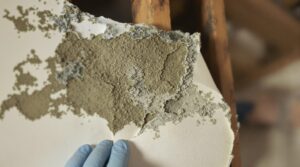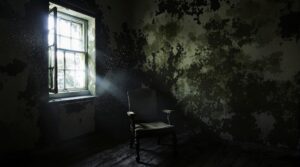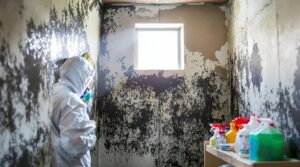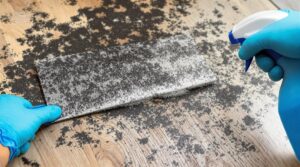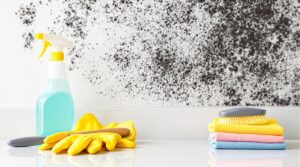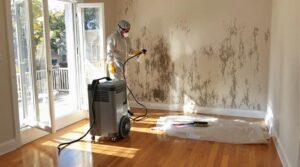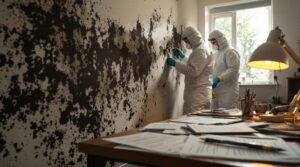Safe and effective shower mold removal requires proper protective equipment including an N95 respirator, gloves, and eyewear. Natural solutions like white vinegar or tea tree oil can be applied with 15-60 minutes of contact time. Chemical options include diluted bleach solution (1 tsp per cup water) for 15 minutes, with adequate ventilation. Prevention involves maintaining 30-50% humidity and addressing water issues promptly. Professional assessment may be necessary for extensive infestations affecting areas larger than 10 square feet. In addition to using the right protective equipment and cleaning solutions, it’s essential to thoroughly scrub affected areas to ensure all mold spores are removed effectively. For those wondering how to remove mold from walls, the process typically involves using a stiff brush and your chosen cleaning solution on the moldy surface before rinsing and drying properly. Regularly checking for leaks and moisture buildup can significantly reduce the risk of mold reoccurrence in your shower and walls.
Key Takeaways
- Mix white vinegar with water or use full strength, spray on moldy areas, and let sit for 15-60 minutes before scrubbing.
- Create a paste with baking soda and water for light mold stains, apply directly, and scrub gently with a brush.
- Apply a bleach solution (1 teaspoon per cup of water) for 15 minutes while ensuring proper ventilation during treatment.
- Run bathroom exhaust fan for 30 minutes after showering and maintain humidity levels between 30-50% to prevent regrowth.
- Wear an N95 respirator, non-latex gloves, and protective eyewear when cleaning mold to ensure personal safety.
Understanding Shower Mold Growth
While many homeowners view shower mold as a mere nuisance, understanding the conditions that promote its growth is essential for effective prevention and removal. The moisture dynamics within bathrooms create an ideal environment for mold proliferation, particularly when humidity levels remain consistently high and ventilation is inadequate.
Several key factors influence mold growth patterns in shower environments. Daily shower activities can result in poor bathroom ventilation that creates a constant cycle of moisture accumulation. Musty odors typically develop within 24-48 hours after water exposure, signaling potential mold presence.
The combination of warm temperatures and organic materials, such as soap residue and body oils, provides perfect conditions for mold development. Poor ventilation exacerbates the issue by trapping moisture, while seasonal changes and temperature fluctuations contribute to condensation formation. The presence of water leaks, even minor ones, can create persistent damp conditions that accelerate mold growth.
Understanding these fundamental growth factors is vital, as mold can cause significant health issues, including respiratory problems and allergic reactions, while potentially causing permanent damage to bathroom surfaces and structures.
Natural Methods for Mold Removal
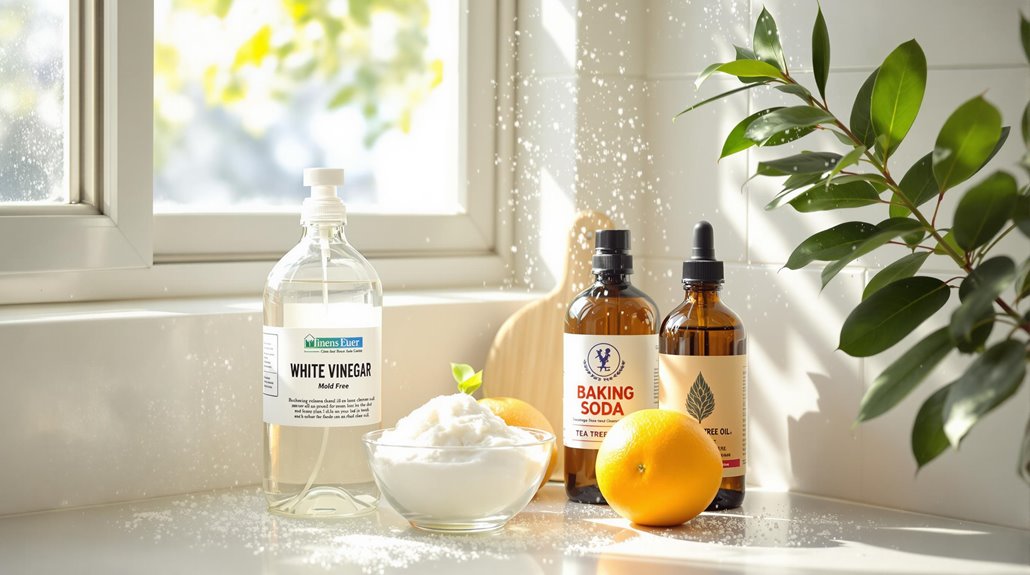
For those seeking eco-friendly solutions to shower mold, several natural methods offer effective alternatives to harsh chemical cleaners. White vinegar, either diluted or at full strength, effectively eliminates mold while preventing its return. Baking soda provides another safe solution, particularly effective when applied as a paste to light mold stains. Proper ventilation remains essential during application of any cleaning solution.
Tea tree oil, a powerful natural fungicide, serves as one of the most potent natural alternatives when mixed with water or vinegar. However, users should exercise caution due to potential skin irritation. When used correctly, vinegar contact time should be between 15-60 minutes for optimal results.
Additional safe solutions include hydrogen peroxide, grapefruit seed extract, and lemon juice, each offering unique antimicrobial properties. These natural alternatives not only remove existing mold but also help prevent future growth when used regularly. Proper ventilation, combined with these treatments, creates an environment less conducive to mold formation, making these methods particularly effective for long-term shower maintenance.
Chemical Treatment Options
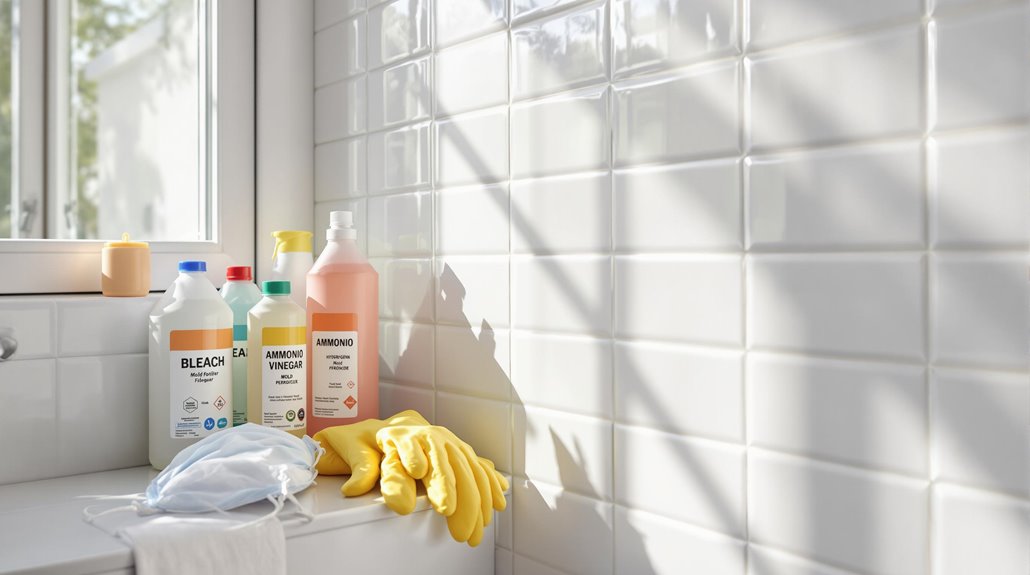
Beyond natural solutions, chemical treatments provide powerful options for eliminating shower mold. When considering chemical safety, proper ventilation and protective equipment are essential for all treatment methods. Poor bathroom ventilation often leads to recurring mold issues, making proper airflow crucial during and after treatment.
The effectiveness of these solutions varies, with bleach and ammonia offering the strongest results on appropriate surfaces. Relative humidity levels above 60% can quickly lead to new mold growth after treatment.
- Bleach solutions (1 teaspoon per cup of water) effectively eliminate mold on non-porous surfaces within 15 minutes
- Ammonia treatments require equal parts water mixing and 10-minute contact time
- Vinegar solutions need longer exposure (1 hour) but offer safer application
- Hydrogen peroxide provides moderate treatment effectiveness with reduced risks
Each chemical option requires specific safety protocols and surface compatibility considerations. Bleach works best on non-porous materials, while vinegar offers versatility across surfaces.
Never mix different chemical treatments, as this can create dangerous reactions. For best results, select the appropriate chemical based on surface type and mold severity, following exact dilution ratios and application times.
Essential Safety Measures
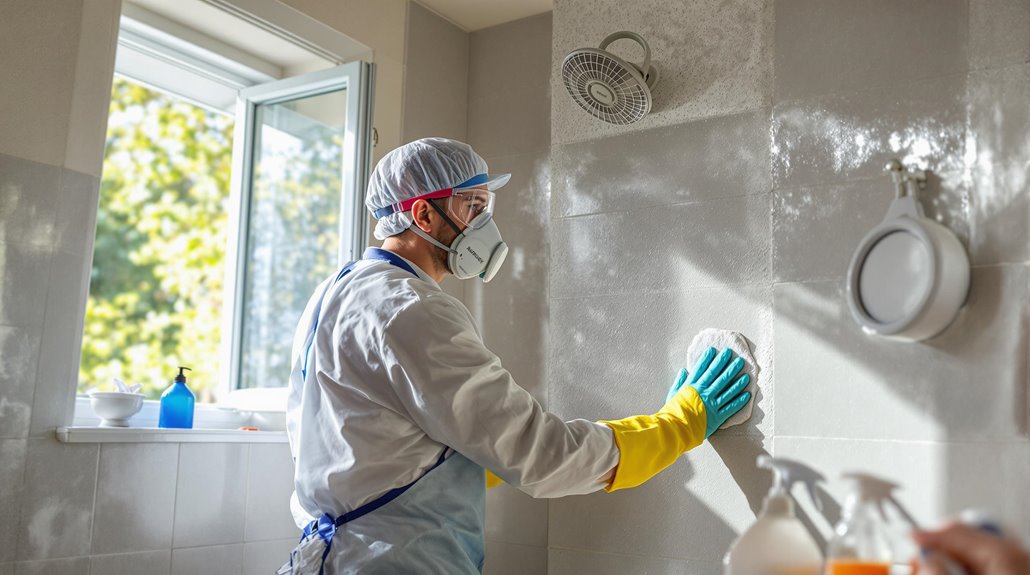
Safety protocols form the foundation of effective mold removal in showers. The implementation of protective measures begins with proper ventilation requirements, including open windows and active exhaust fans to minimize spore concentration in the air.
Workers must wear NIOSH-approved N95 respirators, non-latex gloves, and protective eyewear before initiating any cleaning procedures.
Individuals with allergies, respiratory conditions, or compromised immune systems should not participate in mold remediation activities.
The area must be isolated, and all personal items removed to prevent cross-contamination. During cleanup operations, workers should follow systematic cleaning methods while avoiding the hazardous mixing of chemical cleaners, particularly bleach and ammonia combinations.
For extensive mold infestations or when health risks are significant, professional remediation services should be considered. Post-cleanup, thorough drying and regular monitoring help prevent mold recurrence while maintaining the safety of the shower environment.
For areas larger than 10 square feet, temporary relocation may be necessary during the remediation process.
Prevention and Maintenance Tips
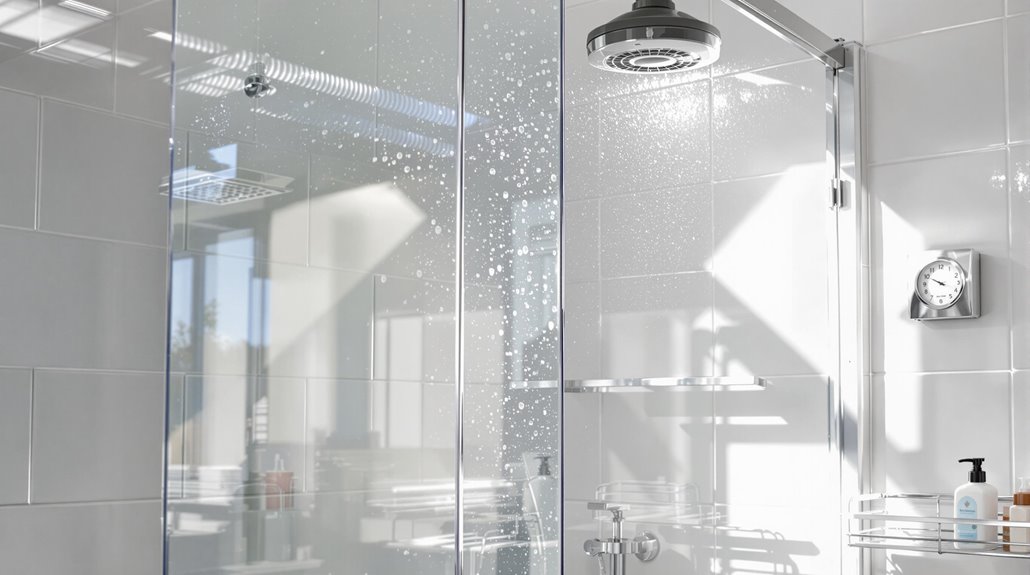
Effective mold prevention in showers requires a thorough maintenance strategy centered on moisture control and proper ventilation.
Implementing extensive humidity control measures, including proper exhaust fan installation and regular maintenance, helps maintain ideal moisture levels between 30-50%.
Surface maintenance through daily cleaning routines and immediate post-shower drying substantially reduces the risk of mold establishment.
- Install appropriately sized exhaust fans with proper ductwork, ensuring ventilation continues for 30 minutes post-shower
- Conduct regular surface maintenance by using daily shower sprays and wiping down surfaces after each use
- Address structural issues promptly, including grout repair and plumbing leak fixes
- Monitor humidity levels with a hygrometer and employ dehumidifiers when necessary
Maintaining proper air circulation through open windows and doors post-shower enhances ventilation effectiveness.
Regular inspections of bathroom surfaces, combined with thorough cleaning using mold-killing products, create an environment inhospitable to mold growth.
Proper storage of shower items and increased natural light exposure further support prevention efforts.
Since mold can develop within 24-48 hours after water exposure, immediate action on water issues is crucial for prevention.
The Benefits Of Consulting A Public Adjuster
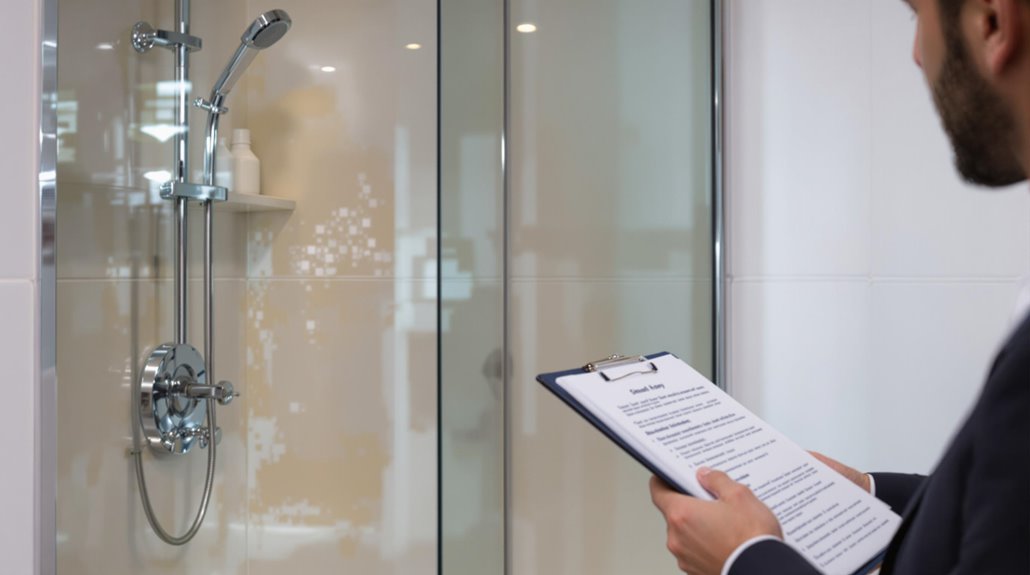
When dealing with significant mold issues in shower areas, consulting a public adjuster can provide expert guidance through complex insurance claims while ensuring objective damage assessment.
Public adjusters specialize in maximizing claim settlements through thorough documentation and professional negotiation with insurance companies, often securing higher payouts than homeowners might obtain independently.
Their involvement streamlines the entire claims process by managing all communications, paperwork, and technical assessments, which proves particularly valuable when addressing extensive mold damage requiring professional remediation.
Studies have shown that working with licensed public adjusters can result in settlements up to 500% higher for non-catastrophe claims like mold damage.
Expertise In Insurance Claims
Dealing with mold-related insurance claims requires specialized knowledge that public adjusters can provide to homeowners. These professionals understand complex insurance regulations and maintain expertise in proper claim documentation, ensuring homeowners receive maximum compensation for mold damage in their showers and bathrooms.
- Public adjusters evaluate the full extent of mold damage through thorough inspections
- They analyze insurance policies to identify all applicable coverage and exclusions
- Experts compile exhaustive documentation to support the claim's validity
- They navigate intricate claim processes while advocating for fair settlements
Public adjusters streamline the entire claims process by managing inspections, paperwork, and communications with insurance companies.
Their expertise helps expedite settlements while ensuring homeowners receive appropriate compensation for mold remediation and repairs, minimizing potential health risks and preventing further property damage.
Working on a contingency basis, public adjusters only receive payment when they successfully secure compensation for your mold damage claim.
Objective Damage Assessment
Consulting a public adjuster provides homeowners with an unbiased, professional assessment of mold damage in their showers and bathrooms. Through extensive visual assessment and damage mapping techniques, these experts document all affected areas, including hidden spaces that may harbor mold growth.
The adjuster conducts a thorough inspection process, beginning with an initial consultation to review insurance policy coverage and exclusions. Their specialized knowledge enables accurate identification of the damage extent, ensuring nothing is overlooked during the claims process. This detailed documentation serves as vital evidence when submitting claims to insurance companies. Public adjusters typically help secure higher settlement amounts compared to initial insurance company offers for mold-related claims.
Streamlined Claim Process
A streamlined claims process through a public adjuster substantially enhances the efficiency and success rate of mold-related insurance claims.
Public adjusters facilitate efficient processing by managing digital submission of documentation while representing policyholder interests throughout the claims process.
- Professional adjusters guarantee thorough assessment of mold damage and negotiate fair settlements with insurance providers
- Expert guidance prevents underpayments and inadequate remediation efforts that could lead to recurring mold issues
- Digital claim submission and real-time tracking provide transparency and expedite the resolution process
- Percentage-based compensation structure aligns the adjuster's interests with maximizing the policyholder's claim settlement
Working with a qualified public adjuster minimizes stress and potential complications while guaranteeing proper documentation and compensation for mold-related damages in shower areas.
Since public adjusters typically charge 5-20% contingency fee of the final claim amount, their services often prove cost-effective compared to handling claims independently.
Higher Claim Payouts & Settlements
Studies consistently demonstrate that hiring a public adjuster for mold-related insurance claims leads to substantially higher settlement amounts. Research by the Florida Association of Public Insurance Adjusters revealed policyholders with public adjusters received settlements averaging $22,266, compared to $18,659 without representation. This settlement maximization stems from their expertise in policy interpretation and negotiation strategies.
| Benefit Category | Impact | Result |
|---|---|---|
| Documentation | Thorough damage assessment | Complete coverage |
| Negotiation | Expert representation | Payout optimization |
| Policy Analysis | Maximum coverage identification | Higher settlements |
Public adjusters work on contingency fees, typically capped at 10% in many states, ensuring their motivation aligns with achieving ideal claim outcomes. Their extensive understanding of insurance policies and proven track record in securing enhanced settlements makes them valuable assets for mold-related claims. The pre-vetted licensed adjusters within PCAN must maintain 4+ star reviews and pass regular background checks to ensure quality representation.
About The Public Claims Adjusters Network (PCAN)
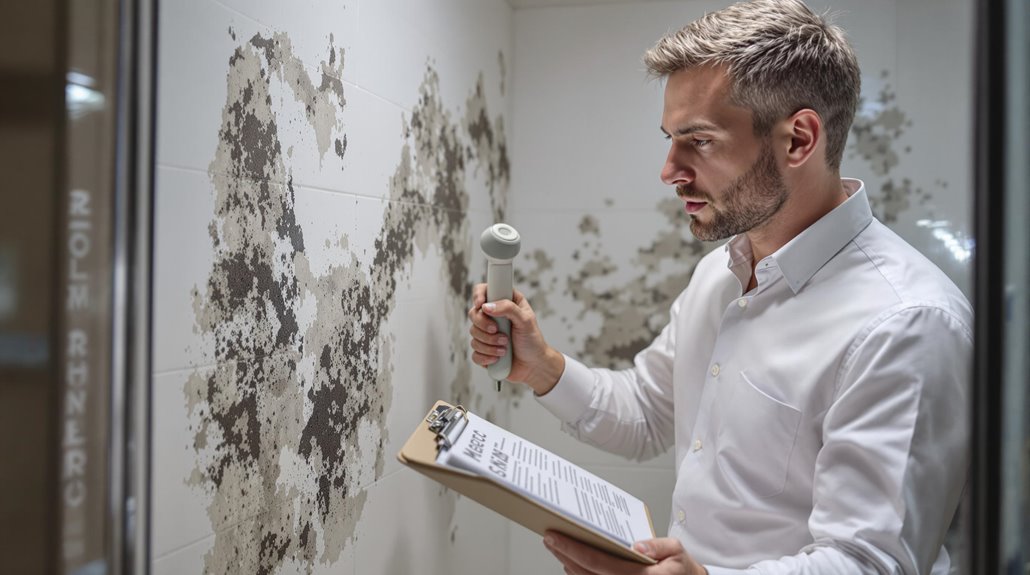
Public claims adjusters form a critical professional network that helps policyholders navigate complex insurance claims processes.
The Public Claims Adjusters Network has established a robust presence through network expansion across all 50 states and international operations spanning five continents. With 10 international offices, these licensed professionals provide complete support and expertise in managing insurance claims for their clients.
Key aspects of the Public Claims Adjusters Network include:
- Independent advocacy services focused exclusively on policyholder interests
- Licensed professionals who conduct thorough damage assessments and documentation
- Extensive claim preparation and submission expertise
- Strategic communication management with insurance companies to facilitate settlements
These adjusters utilize their extensive experience to review policies, inspect properties, and prepare detailed documentation.
Their specialized knowledge enables them to guide policyholders through policy interpretation while ensuring accurate claim submissions.
Through systematic processes and professional expertise, they work to secure favorable settlements for their clients.
Frequently Asked Questions
How Long Does It Take for Mold to Start Growing in Showers?
Mold growth in showers typically initiates within 24-48 hours, depending on moisture levels and temperature variations. Under ideal conditions of high humidity and warmth, colonization can begin even faster.
Can Shower Mold Make You Sick Even After It's Been Cleaned?
Studies show 93% of chronic sinus infections link to mold exposure. Even after cleaning, residual spores can trigger respiratory effects, particularly in individuals with compromised immunity or existing sensitivities.
Should I Replace My Shower Curtain if It Has Mold?
Replacing moldy shower curtains is recommended if frequent washing fails to eliminate mold growth. Consider plastic alternatives with antimicrobial properties, as persistent mold can pose health risks despite cleaning efforts.
Does Colored Mold Require Different Treatment Than Black Mold?
Colored variations of mold do not require different treatment methods than black mold. All mold types should receive the same thorough remediation, as treatment differences are based on growth extent and location.
Will Painting Over Moldy Shower Walls Solve the Problem?
Like a mask hiding a wound, painting over mold provides false security. Paint traps moisture underneath, allowing mold to thrive unseen while continuing to spread and potentially cause health hazards.
References
- https://advantaclean.com/ft-lauderdale-fl/about-us/blog/how-to-remove-mold-from-shower–a-complete-guide/
- https://www.familyhandyman.com/project/how-to-prevent-bathroom-mold/
- https://moldsolutionsnw.com/blog/how-to-get-rid-of-mold-in-shower/
- https://www.homesandgardens.com/bathrooms/how-to-clean-mold-in-the-shower
- https://www.angi.com/articles/how-prevent-bathroom-mold.htm
- https://loveyourstone.com/the-war-on-shower-mold/
- https://dixieshowerdoors.com/mold-mildew-growth-causes/
- https://www.mansfieldplumbing.com/blog/how-and-why-mold-spreads-in-your-bathroom/
- https://www.ecofmr.com/articles/getting-rid-of-mold-naturally-non-toxic-diy-mold-remover/
- https://yesweinspect.com/how-to-get-rid-of-mold-in-shower-tips-for-a-mold-free-bathroom/

